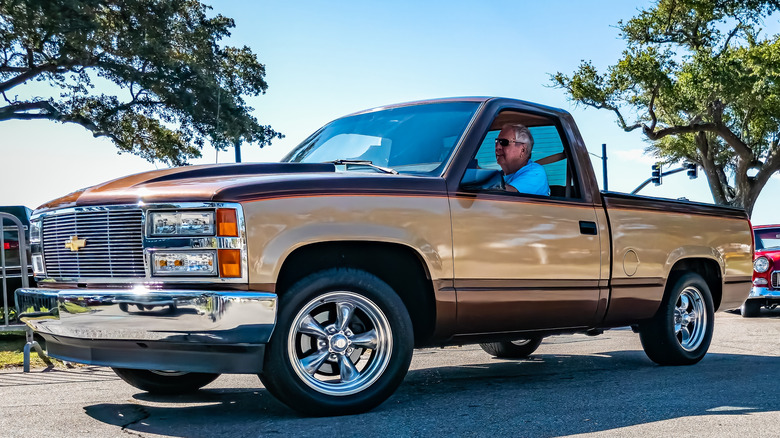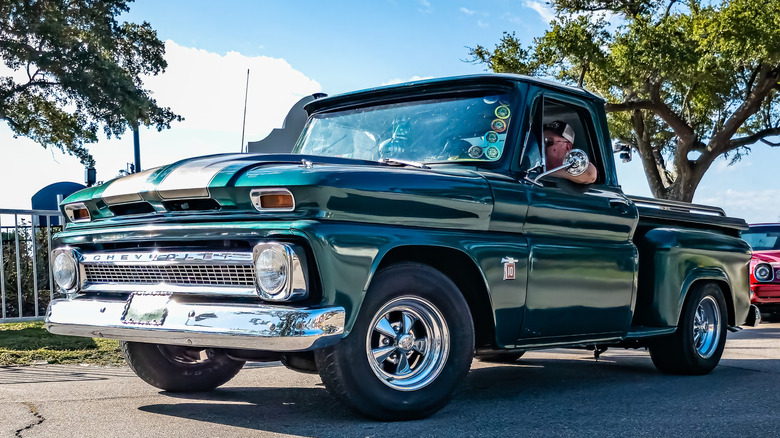What Are C/K Chevy Trucks, And When Were They Made?
Chevrolet's C/K truck series grew into one of the most influential pickup lines in American automotive history. Having first been introduced for the 1960 model year, these trucks ran through four generations before being phased out in 2002. Chevrolet employed a simple naming structure, with "C" designating a two-wheel drive model, and "K" denoting four-wheel drive versions. Alongside the letter designation, Chevrolet used numbers to represent weight classes, with 10 standing for half-ton, 20 for three-quarter-ton, and 30 for one-ton trucks.
Each run was a significant chapter for Chevrolet, with the original run lasting from 1960 to 1966, followed by the second-generation Action Line trucks, which ran from 1967 to 1972. The third generation followed with a run that lasted from 1973 through 1987, before being succeeded by the fourth and final C/K truck generation. This arrived in 1988 and continued in various forms until 2002, when Chevrolet fully transitioned to the Silverado branding for its pickups. The Silverado continues to be Chevrolet's best seller in 2025 so far, demonstrating that the pickup that evolved from the C/K series is still just as relevant as it always has been.
Innovations throughout the C/K's history
Starting with the 1960 redesign, Chevrolet introduced an all-new frame with a dropped center section that made the cab easier to access without sacrificing ground clearance. Suspension was overhauled as well, with independent front suspension replacing the solid axle; a move that gave Chevy trucks a much smoother ride. In the rear, coil springs and control arms improved handling, though GMC versions stuck with traditional leaf springs.
The introduction of a factory 4x4 option marked a big shift. Prior to this, four-wheel drive was handled by NAPCO, which retrofitted trucks with a "Power-Pack" 4x4 system. Chevrolet's new setup used a divorced transfer case that marked the beginning of in-house four-wheel drive development — years ahead of Ford's I-Beam suspension debut in 1965.
By the time the second generation arrived in 1967, Chevrolet had built on these engineering upgrades by introducing a wider range of larger, more powerful engines, in addition to improved four-wheel-drive systems. The third-gen trucks brought the introduction of a Crew Cab option, and when the fourth-generation C/K trucks arrived in 1988, Chevrolet changed the naming system to the now-familiar 1500, 2500, and 3500 designations. Extended cabs became available, and Chevy added special packages like the Z71 off-road trim, plus the high-performance 454SS muscle truck. Even after light-duty C/K trucks were rebranded as Silverado in 2000, the old body style continued to be built as fleet-focused heavy-duty models through 2002.
Here's what to pay for a C/K Chevrolet today
With over 40 years of production, it's inevitable that prices of C/K trucks are going to fluctuate somewhat. This large span of models also provides a great amount of choice to buyers, with everything ranging from chrome-clad classics from the first generation, through to performance-oriented trucks from the C/K's latter years.
Classic, a classic car market search engine, gives us a snapshot of where the market is at right now for each generation, by looking at auction sale results from over the last five years. With this data, we can see that first-gen models on average are selling for around $32,000, although exceptional examples command well into the six-figure range. It's a very similar story for second-gen trucks, which on average are fetching up to $5,000 more than the earlier generation. Third- and fourth-generation C/K Chevy trucks are a little more affordable, realizing values in the $30,000 and $18,000 range, respectively. It's the restored and restomod trucks from the first three generations that are commanding huge six-figure sums, while the final C/K series sits as a cost-conscious outlier. Regardless, you'll end up with a truck with a hefty history.


